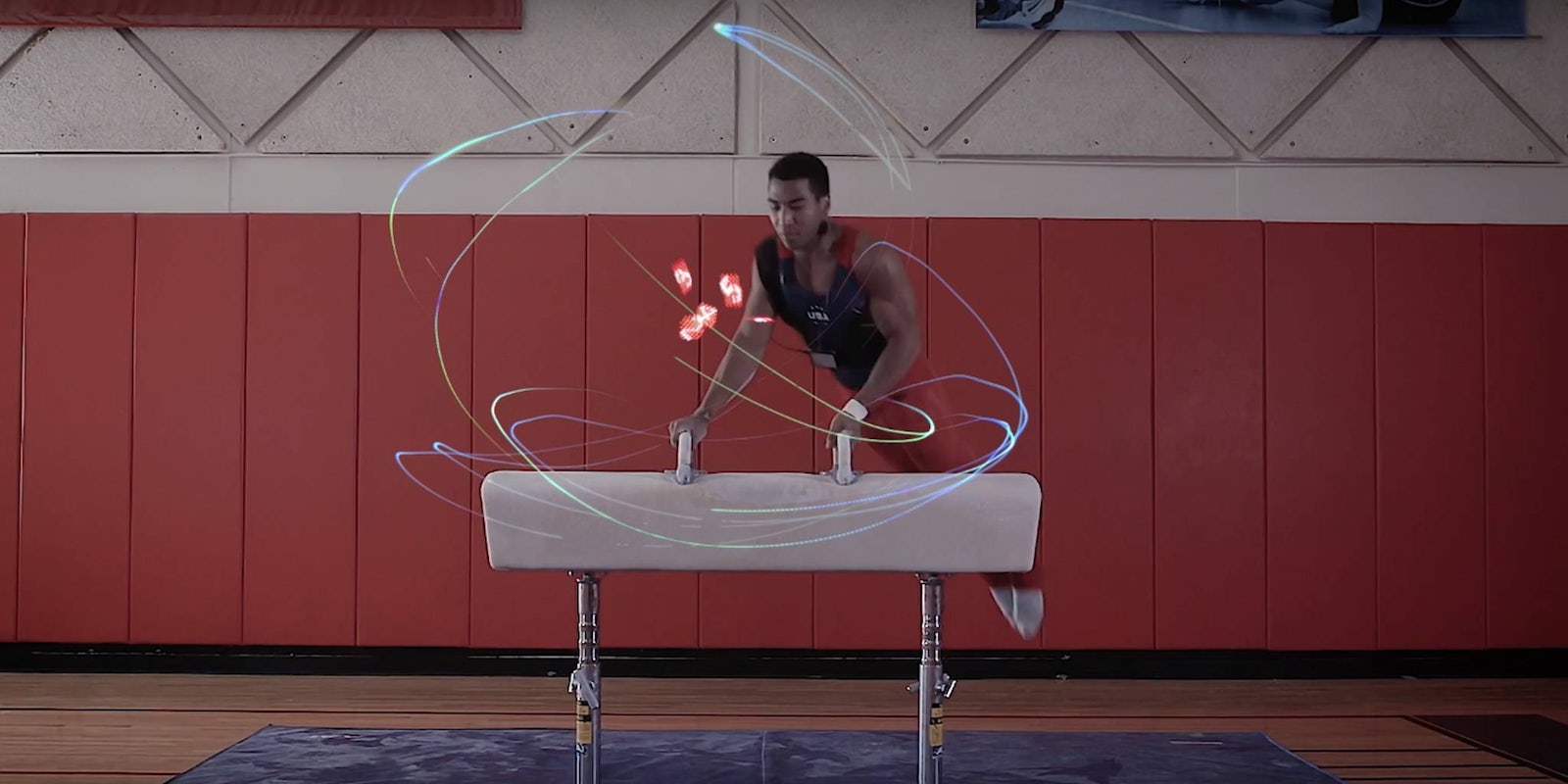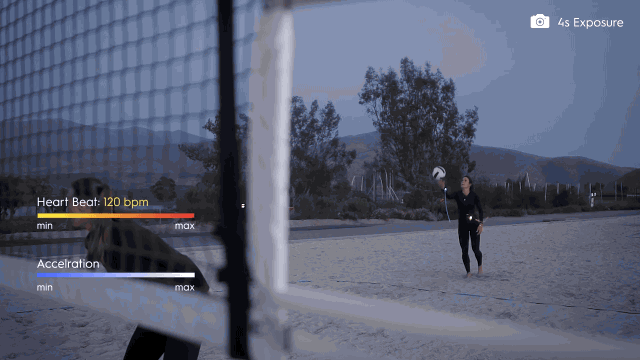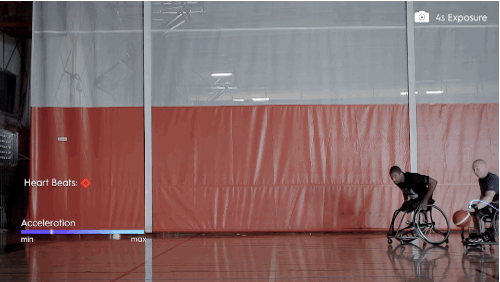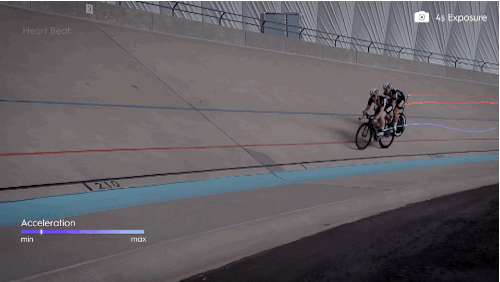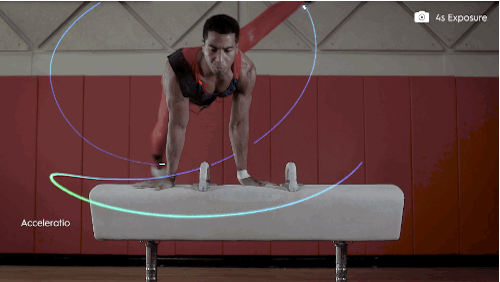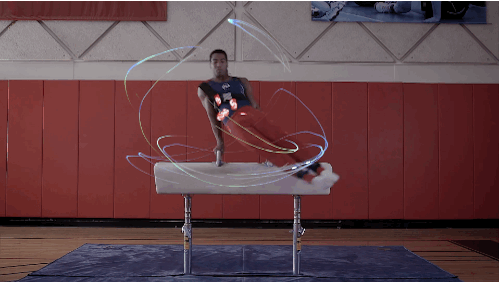The Olympics is the best opportunity for athletes to step into the spotlight and showcase their skills. Using biometric sensors and LEDs, General Electric has found yet another way to shine a light on the performance of these world-class talents: by turning athleticism into light-painting.
To create the illusion of athletes painting their performances, GE crafted a variety of sensor rigs designed to capture several important factors including acceleration, muscle activity, and heart rate.
“These analog impulses are captured via sensor, converted into digital information, and with our custom software, measured, cleaned (there is a significant amount of ‘noise’ that the sensors pick up when connected to the body), and re-converted into analog information that drives a series of red, green, and blue LED lights,” Steve Pepe, the global leader of commercial marketing at GE, explained to the Daily Dot.
With that data, GE was then able to control some of the characteristics of the lights, including the intensity, color composition, and frequency of them. According to Pepe, the inputs of the sensors were recorded and converted 240 times per second to make sure every action is accurately reflected in the lighting.
Those LEDs are turned into digital paintbrushes when recorded using slow motion video and long exposure photography, making it possible to visualize the incredible amount of physical exertion that goes into each maneuvers performed by these athletes.
The group who decided to record their performance in brilliant light includes a collection of world-class athletes and Olympic hopefuls.
Gymnast Josh Dixon, pole vaulter Kortney Ross, weightlifter Donovan Ford, and volleyball player Angela Bensend all partook in GE’s project, and their athletic ability is on full display despite missing the cut to represent their country at the Olympics.
Paralympic wheelchair basketball player Trevon Jenifer and track cyclist Sarah Hammer also got hooked up for the experiment, both of whom will be competing for Team USA in Rio.
Pepe said the team had to be careful not to reveal too much about the biometrics of the athletes as they ” guard their training and conditioning information closely,” but the lighting system still provides a unique output to measure performances visually rather than through typical numerical metrics.
“In the near future, seeing an athlete’s biodata in a sports broadcast might be commonplace,” Pepe suggested. And the lighting system may have use beyond that; GE is currently working on LED-based intelligent lighting systems that are capable of actively responding to environmental data and activity.
